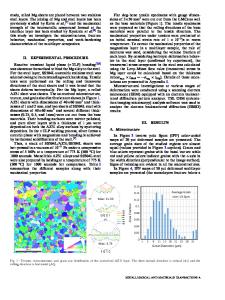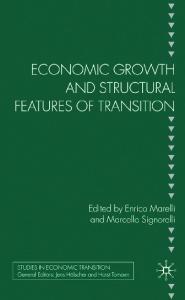Structural and Mechanical Features of Laser-Welded Joints of Zinc-Coated Advanced Steel Sheets
- PDF / 1,617,704 Bytes
- 6 Pages / 594 x 792 pts Page_size
- 55 Downloads / 420 Views
STRUCTURAL AND MECHANICAL FEATURES OF LASER-WELDED JOINTS OF ZINC-COATED ADVANCED STEEL SHEETS J. Viňáš,1 J. Brezinová,1 J. Brezina,1 and P. O. Maruschak2,3 We analyze the quality of laser-welded bodywork steel sheets. The welding was done by a CO 2 laser. We studied the welds made on steel sheets of advanced grades: high-strength low-alloy steel, dual phase steel, and multiphase transformed steel with induced plasticity. Both sides of steel sheets were galvanized. The quality of welded joints was assessed by visual inspection. We performed the tensile tests of the specimens, including fracture tests. The Vickers microhardness was evaluated in the individual regions of joints. The macro- and microstructural analyses were performed by microscopy. The parameters recommended by the International Institute of Welding were used for welding. According to the data of nondestructive and destructive tests, the analyzed welds were classified as satisfactory. Keywords: laser welding, automotive structure, evaluation, steel.
Introduction Under the conditions of constantly growing amounts of the automobile production, the manufacturers try to reduce their consumption due to continuously increasing fuel prices. One way to save fuel is to decrease the car weight. The weight can be lowered by applying high-strength steels (HSS) in combination with composites and sandwich materials. At present, the amount of applied advanced HSS is increasing because they allow us to reduce the weight of the vehicle and its fuel consumption, thus guaranteeing high passive crew safety especially at the points of deformation zones. The group of HSS materials includes dual-phase (DP) steels, transformed steels with induced plasticity (TRIP), multiphase steels, and martensitic steel. Their characteristic features are as follows: the slope values Re > 300 MPa and the high-tensile strength Rm > 600 MPa. The TRIP steels are especially highly perceptible. They are usually alloyed with C, Al, Mn, S, Si, P, B, Cr + Mo, and Nb + Ti. The elevated Al content causes an increase in the amount of residual austenite in these steels. Like Si, Al is also insoluble in cementite, which causes its slow formation and, at the same time, an increasing rate of the bainitic transformation. Note that these promising types of steels are not only capable of decreasing the car weight. Moreover, they are still predominant in the production of deep-drawn steels [1–4]. The fraction of galvanized steel sheets noticeably increases in response to the customer requirements of high corrosion resistance in the automotive industry. Welding of galvanized steels performed with the help of lasers is a subject of extensive investigations with emphasis on the strength properties and geometry of the joints [5–6]. As an advantage of laser welding, we can mention low thermal impact on the site of welding as compared with the MAG welding. Indeed, low heat inputs restrict the volume of the material with changed properties to the minimum possible value [7–9]. 1 2 3
Department of Technology and Mater
Data Loading...











